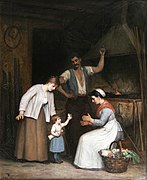
Akseli Gallen-Kallela was a Finnish painter who is best known for his illustrations of the Kalevala, the Finnish national epic. His work is considered a very important aspect of the Finnish national identity. He finnicized his name from Gallén to Gallen-Kallela in 1907.
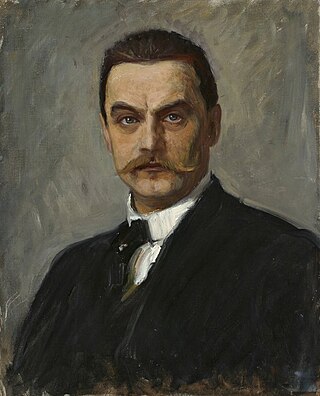
Albert Gustaf Aristides Edelfelt was a Finnish painter noted for his naturalistic style and Realist approach to art. He lived in the Grand Duchy of Finland and made Finnish culture visible abroad, before Finland gained full independence. He was considered the greatest Finnish artist of the second half of 19th and the first half of the 20th centuries, and one of the most prominent contributors to the Golden Age of Finnish Art.
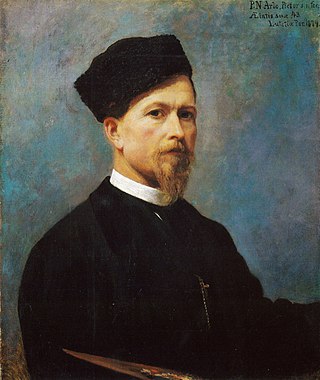
Peter Nicolai Arbo was a Norwegian historical painter, who specialized in portraits and allegorical scenes from Norwegian history and the Norse mythology. He is most noted for The Wild Hunt of Odin, a dramatic motif based on the Wild Hunt legend and Valkyrie, which depicts a female figure from Norse mythology.
The Düsseldorf School of painting is a term referring to a group of painters who taught or studied at the Düsseldorf Academy roughly between 1819 and 1918, first directed by the painter Wilhelm von Schadow.
Events from the year 1909 in art.

Karl Emanuel Jansson was a Swedish-Finnish painter, primarily of genre scenes.

Magnus von Wright was a Swedish-Finnish painter and educator. In addition to bird illustrations, he was also known for his landscapes. He was one of the four sibling von Wright artists.

Pascal-Adolphe-Jean Dagnan-Bouveret was a French painter, one of the leading members of the naturalist school.

Gunnar Fredrik Berndtson was a painter from the Grand Duchy of Finland who was noted for his attention to realistic detail.

Ferdinand von Wright was a Finnish painter - He is best known for his landscapes and animal paintings, especially his detailed depictions of birds, but he also created still-lifes and portraits.

Berndt Abraham Godenhjelm was a Finnish painter.
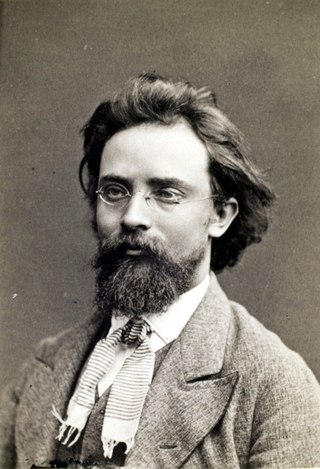
Walter Magnus Runeberg was a Finnish neo-classical sculptor. He was the son of Finnish national epic poet Johan Ludvig Runeberg.
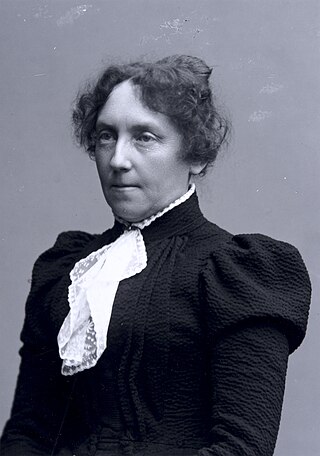
Maria Catharina Wiik was a Finnish painter. She worked principally with still life, genre images, landscape paintings and portraits.
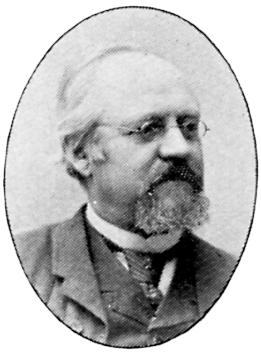
Berndt Adolf Lindholm was a Finnish landscape painter. He is usually associated with the Düsseldorf School, but his work also displays early Impressionist elements. He specialized in coastal scenes.

Erik Johan Löfgren was a Finnish-Swedish portrait painter.

Hilda Flodin was a Finnish artist. She worked in a variety of media, but in the first part of her career primarily sculpture and etchings, later primarily painting, especially portraits.

Anna Emelia Elisa Wengberg (1865–1936) was a Swedish painter specializing in portraits, who was a member of the Önningeby artists colony on the Finnish island of Åland. Her works are in the collections of the National Museum of Fine Arts in Stockholm and the Helsingborg Museum.

Adolf Schill, often also Adolph Schill, was a German architect, interior designer, artisan, illustrator and painter of the historism. As a university lecturer he worked at the Kunstakademie Düsseldorf between 1880 and 1911, thus helping to shape the later phase of the Düsseldorf school of painting. Students of sculpture also studied with him.

Self-Portrait is a pencil and sepia ink on paper drawing by Finnish artist Ellen Thesleff (1869–1954) created from 1894 to 1895. It is one of nine early works produced from 1890 to 1905, sometimes referred to as her "natural" period. The drawing is believed to have been influenced by spiritualism and Symbolism, an art movement popular in France at the fin de siècle. Thesleff uses a restrained, ascetic palette devoid of color to depict her likeness, which is interpreted as both introspective and transcendent. It is held by the Finnish National Gallery, Ateneum art museum, in Helsinki.



![Portrait by William Gromme [fi], 1901 Adolf von Becker by William Gromme.jpg](http://upload.wikimedia.org/wikipedia/commons/thumb/4/44/Adolf_von_Becker_by_William_Gromme.jpg/100px-Adolf_von_Becker_by_William_Gromme.jpg)

















